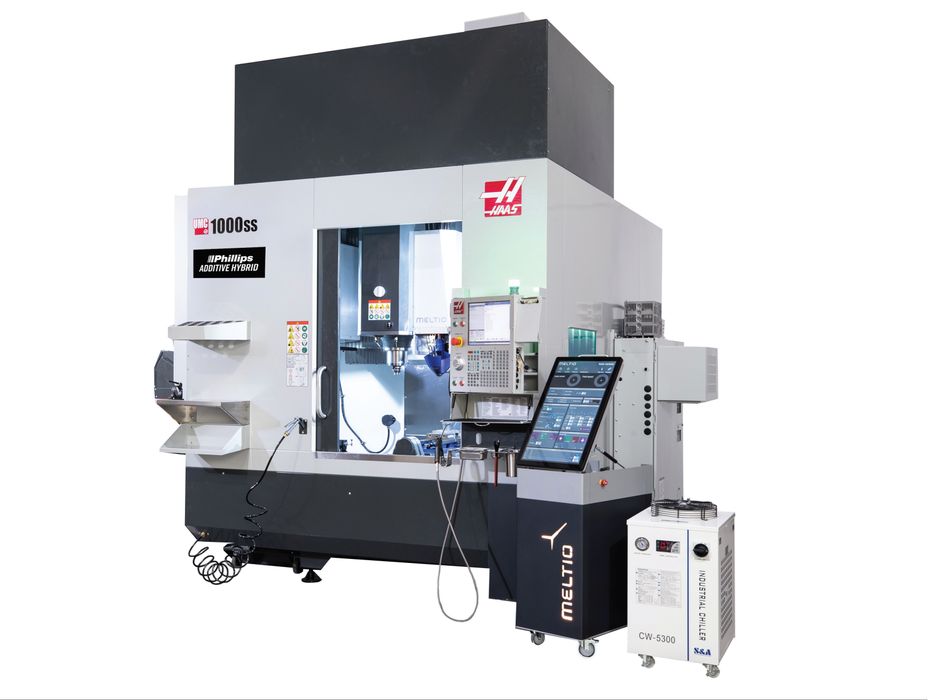
Meltio announced a hybrid metal 3D printer with the help of Philips Corporation.
The company is quite new, and based on a partnership between Grupo Sicnova and Additec established in 2019. The company produces metal 3D printers that use a directed energy deposition (DED) process. Their unique feature is the ability to 3D print using either powder or wire materials using the same equipment, which opens up more possibilities for material options.
One of the purchasing options from Meltio is the ability to acquire the DED toolhead for installation on a CNC frame. This is likely a continuation of Additec’s original business, but certainly an important option for some buyers.
This week Meltio announced a new hybrid CNC – 3D print solution was developed by Phillips Corporation. They mounted a Meltio toolhead on a Haas Automation subtractive CNC device to create a hybrid device capable of both additive and subtractive operations.
Phillips Corporation explains:
“Engineering a seamless connection between controls, the Phillips Additive Hybrid is capable of traditional machining coupled with an additive manufacturing process using direct energy deposition technology. The result is that Phillips has successfully integrated the power of both subtractive and additive processes for a revolutionary and affordable solution to producing and repairing parts.”
Combining 3D Printing and CNC Milling
The combination of manufacturing processes is an interesting prospect.
DED is well-known, but, like any 3D printing process it has constraints. One of the challenges is the ability to produce smooth surfaces, which is difficult when depositing metal with DED. For larger parts this is not a big issue, as the larger the part, the less important surface quality matters.
That could be one reason Additec partnered with Grupo Sicnova, as the latter was known for building larger-format 3D printers, of a size that would be quite amenable for DED processes.
Meanwhile, subtractive CNC processes are known for their ability to produce perfectly smooth surfaces.
I think you get the idea here: 3D print a rough part with the Meltio toolhead, then CNC mill the surfaces to the desired surface quality. While some DED operations will do this same processing on separate systems, here the Phillips Additive Hybrid can do the job within the same frame.
There are two possibilities for CNC milling, and it’s not clear which (or both) will be used by the Phillips Additive Hybrid machine. One way is to DED 3D print the entire object, and then post-process it using the CNC toolhead for surface quality.
Another possibility is to CNC mill each layer (or small groups of layers) as the 3D print proceeds. This allows smoothing of internal surfaces that might not be accessible by the CNC toolhead after the 3D print completes.
Both processes would certainly be technically possible on the hybrid machine, and would need only to be enabled by appropriate software. However, that is one of the specialities of Phillips, so I would not be surprised if this device can do some amazing things.
Finally, I’m told the new hybrid machine will be available to commercial and federal government markets in the near future.
